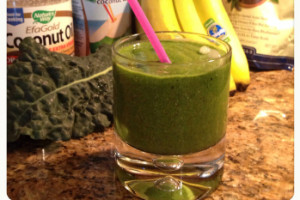We’re not sure who discovered it, but teeth whitening with activated charcoal is high on the list of options for DIY teeth whitening. Some folks are interested in activated charcoal as a natural option to other commercial teeth whitening toothpastes that may contain chemicals and/or fluoride. Other folks may be using activated charcoal as an at-home, more affordable alternative to professional teeth whitening treatment.
Jessica, our video blogger, tried using turmeric and coconut oil to whiten her teeth as another, natural, DIY option. Click here to check out that video and see the results, or read on below for a written recap.
What is Activated Charcoal?
Activated charcoal is also known as activated carbon. It’s commonly found in household medicine cabinets as an intestinal decontaminant to help reduce the effects of suspected issues like food poisoning, and is sometimes used in hospitals and emergency rooms. It is actually on the World Health Organization’s List of Essential Medicines. Activated charcoal powder is noticeably black, but is odorless and tasteless. It is nontoxic, but you should not breathe it in. You can also commonly find activated charcoal in air and water filters. It’s inexpensive and can easily be purchased online.
How does Activated Charcoal Work?
Activated charcoal is NOT the same thing you see in your fireplace or campfire when you’re done roasting marshmallows. Charcoal is “activated” by steam or chemical methods at an extremely high temperature, in order to remove volatile compounds and to separate the atoms. When the atoms are separated, they leave space to pull in other substances, and bind them to the carbon. This binding helps to prevent toxins and other soluble substances from being absorbed into the GI tract. Then, the charcoal plus whatever it has picked up is, um, eliminated from your system the next time you go.
 Teeth Whitening with Activated Charcoal – the Recipe and Process
Teeth Whitening with Activated Charcoal – the Recipe and Process
The recipe for creating activated charcoal toothpaste is very simple – just empty a capsule of activated charcoal onto your toothbrush, add a little water, and brush. When you’re done brushing, rinse your mouth very well. Avoiding the mess from activated charcoal, however, is not quite so simple. The powder is very fine, and you should not breathe it in. Charcoal is easy to wipe off non-porous surfaces, but easily stains plastics and grout.
The Results of Using Activated Charcoal for Teeth Whitening
Jessica, our brave blogger, brushed her teeth with activated charcoal for a week. She reported that the results after a week showed a modest improvement, and whitened her teeth by about 1 shade. Brushing with activated charcoal had the unintended effect of causing her a fair amount of gum irritation, and resulting tooth sensitivity. It’s always important to make sure your teeth and gums are healthy overall. White teeth does not always equate to a healthy mouth. If you have dental restorations like composite fillings, crowns or bridges, it’s a very good idea to check with your dentist to make sure that they will not be affected by DIY whitening methods, like teeth whitening with activated charcoal.
The Unintended, Yet Amazing Benefit of Activated Charcoal for Oral Health
Jessica reported that while she wasn’t exactly sold on the results of using charcoal to whiten her own teeth, that of course does not mean that others will not notice results they are happy with. Regardless of the outcome, it was an excellent way to confirm the importance of flossing. Charcoal works by binding substances, but if you don’t rinse it off, it sticks to surfaces and is a great, visual way to show that brushing alone can’t remove plaque and biofilm from all of the surfaces of your teeth.
In our DIY experimentation, we realized some important factors to take into consideration when considering using an at-home option to whiten your teeth.
How soon do you expect to see results? Most DIY methods take a few days at a minimum to show results, and may also require continuing to use the method to maintain the results. If you’re looking for something to work overnight, you may want to consider a commercial tooth whitening treatment as an option.
FOR A LIMITED TIME: Save over $200 on ZOOM! Teeth Whitening
at any of our Chicago area dental clinics

What is your current oral health – when was the last time you had a professional dental check-up and cleaning? It’s amazing how much cleaner, brighter and whiter your smile looks after a polish – that’s because the polishing paste used by dentists is abrasive, and does an excellent job of scrubbing off surface stains, without the unintended contact with sensitive gum tissue. A quick trip to the dentist for a regular checkup can often yield the results you’re looking for.
What is the natural color of your teeth? Not everyone has naturally “white” teeth. Some folks have ivory colored teeth that are naturally a little bit yellow looking. Jessica’s teeth are ivory colored. This means that it may not be realistic to expect that bright white smile you see in photos, no matter what method of teeth whitening method.
Join Us in the Comments!
Have you brushed your teeth or tried teeth whitening with activated charcoal? We’d love to hear from you! Please leave a comment with your thoughts and experiences.
Leave a comment




 Teeth Whitening with Activated Charcoal – the Recipe and Process
Teeth Whitening with Activated Charcoal – the Recipe and Process

23 Comments
Leave your reply.